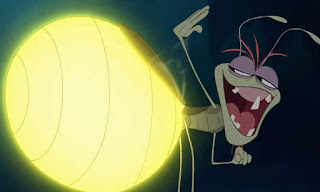Final Friday One More Time.
So, guess who is a dummy and didn't realise there was one more Friday in August? This mermaid! Oh well, this just means it's a two parter and you get my top ten Mythical Sea Beasts!
10. Poseidon
 |
| Poseidon. Photo from Wikipedia |
Technically, Poseidon is a Greek God and therefore not a sea beast - but I do not care. My list, my rules.
Poseidon is the Greek God of the sea, one of the three God Kings, the other two being Zeus and Hades. They are brothers. I have a massive soft spot for Greek Mythology. That may have something to do with Disney's Hercules... But I also remember studying them in school at a young age. We used to have a collection of myths written as comic books. I must have read that over a hundred times.
Therefore it is necessary he is included on my list. Also, he has some beastly DNA. According to legend, Pegasus was created when Poseidon bedded a Gorgon. That is a god and a snake haired lady making a flying horse. Them Greek Gods have some crazy DNA.
9. Naiads
 |
| Naiad drawn by annewipf on Deviant Art |
Keeping in the Greek Mythology corner, we have the elemental Naiads. They are water nymphs which reside in rivers, wells, brooks, streams, and small bodies of water. They are fresh water creatures, with cousins which live in the oceans. The word Naiad derives from words meaning "to flow" and "running water".
The Naiads were worshipped, although not considered Gods. Folk would leave them offerings and animal sacrifices.
8. Kelpie
 | |
| Kelpie from Irish Abroad. |
Kelpies are from Celtic Mythology. They are ghostly, water horses who often disguise themselves as beautiful women, though they often retain their hooves. They inhabit Scottish Lochs and many have their own kelpie related legend. The moral of these legends? Do not trust the kelpie. They are depicted as a watery boogeymen, designed to scare children away from the water.
7. Sirens
 |
| Siren from YouTube channel Mythology & Fiction Explained |
The first of the honourable mentions, the siren. These ladies are from Greek Mythology. Half-bird, half woman, they sing to lure sailors to their death. In modern depictions they are more like mermaids - half fish, half lady. The half-bird anatomy is linked to the fact they sing to lure sailors. The half-fish depiction uses their beauty to lure sailors.
They live on small islands, in the cliff and rock areas - the best area to lure sailors to their death. The word siren means "binder", as in "bind with magic" or the more literal meaning of sailors binding themselves to the masts to keep themselves from temptation.
Annnnnnddd....
6. Grindylows
 |
| Grindylows from Fantastic Beast Steemit |
Now here I thought that JK Rowling made them up, but I should have known better. That woman plans everything. Grindylows are creatures from English folklore, originating from the Yorkshire/Lancashire area. They are possibly connected to Grendels which are featured in the legend Beowulf. They were said to grab children who got too close to the shore and drown them. Once again, they were used a boogeyman to promote cautiousness around water.
Having said that! Chris and I went stand up paddle boarding at Carsington Water. The lake was full of pond weed which would be a suitable home for grindylows. I definitely kept an eye out when I fell in!
They are small and green, with long, spindley fingers. According to the Harry Potter universe, they have sharp little teeth.
So there you have it! My extra five sea beasts! None of them particularly marine, but there you go.



Comments
Post a Comment